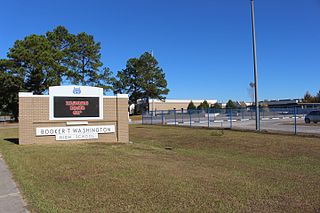
Booker T. Washington High School is a secondary school currently located at 6000 College Parkway in Pensacola, Florida, and is part of the Escambia County School District. It was named after the African-American education pioneer Booker T. Washington. The previous location for the school is now in use as the J.E. Hall Center.
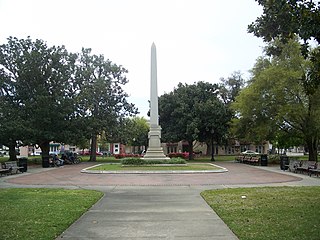
The Plaza Ferdinand VII is an outdoor garden and park in the Historic Pensacola Village area of downtown Pensacola, Florida. It is located on Palafox Street between Government and Zaragoza Streets. It was named after Ferdinand VII of Spain, the King of Spain between 1813 and 1833. A National Historic Landmark, it is the site of the formal transfer of Florida to United States jurisdiction in 1821.
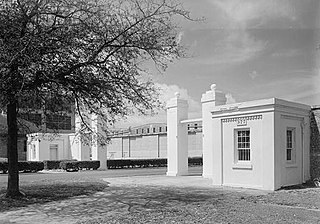
The Pensacola Naval Air Station Historic District encompasses the early historic elements of Naval Air Station Pensacola in Warrington, Florida. Included in the historic district are surviving buildings of the Pensacola Navy Yard, which the air station took over, as well as buildings related to the early years of aviator training by the United States Navy. The district, roughly bounded by West Street, Saufley Avenue, and Pensacola Bay, was designated a U.S. National Historic Landmark District in 1976.
The Hickory Ridge Cemetery Archeological Site (8ES1280) is an archaeological site in Pensacola, Escambia County Florida. It is located north of Big Lagoon and west of Pensacola. During excavations in the 1980s carbon dating was done on burnt wood fragments associated with burials in the mound, with a determination that the site had been used c. 1450. Analysis of ceramics suggested it was a Mississippian culture site, probably from the Late Bottle Creek Phase or Early Bear Point Phases of the Pensacola culture. It was a cemetery associated with a village nearby, (8ES1052). On September 22, 2000, it was added to the U.S. National Register of Historic Places.

Fort George was a British fort built in 1778 for the protection of Pensacola, Florida. The Spanish captured it in Siege of Pensacola on May 10, 1781.

The Saenger Theatre, also known as the Saenger Theater, is a historic theater in Pensacola, Florida. It is located at 118 South Palafox Place. On July 19, 1976, it was added to the U.S. National Register of Historic Places.
The Emanuel Point Shipwreck Site is a historic site near Pensacola, Florida, United States. It is located off Emanuel Point. It has been identified as the galleon San Juan, of the fleet that carried conquistador Tristan de Luna and his army to La Florida in 1559. It sank along with most of the fleet during a hurricane that struck the coast shortly after Luna's arrival. On March 4, 1996, it was added to the U.S. National Register of Historic Places.

Escambe was a Spanish Franciscan mission built in the 17th century in the Florida Panhandle, three miles northwest of the present-day town of Tallahassee, Florida. It was part of Spain's effort to colonize the region, and convert the Timucuan and Apalachee Indians to Christianity. The mission lasted until 1704, when it was destroyed by a group of Creek Indians and South Carolinians.
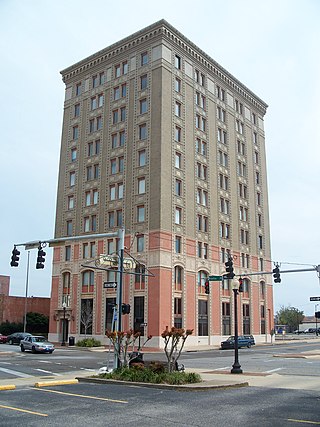
The American National Bank Building is a historic bank in Pensacola, Florida, United States. On November 17, 1978, it was added to the U.S. National Register of Historic Places. It was designed by New York architect J. E. R. Carpenter.
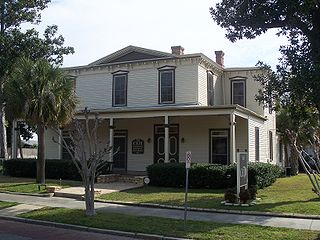
The Charles William Jones House is a historic home in Pensacola, Florida. Named for U.S. Senator Charles W. Jones, it is located at 302 North Barcelona Street. On December 20, 1977, it was added to the U.S. National Register of Historic Places.

The Clara Barkley Dorr House is an historic home in Pensacola, Florida. Built in 1871, it is located at 311 South Adams Street. On July 24, 1974, it was added to the U.S. National Register of Historic Places for its classical revival architecture.

The John Edmunds Apartment House is a historic apartment house in Pensacola, Florida, United States. It is located at 2007 East Gadsden Street. On September 29, 1983, it was added to the U.S. National Register of Historic Places.

The King-Hooton House is a historic home in Pensacola, Florida. It is located at 512–514 North Seventh Avenue. On August 23, 1991, it was added to the U.S. National Register of Historic Places.
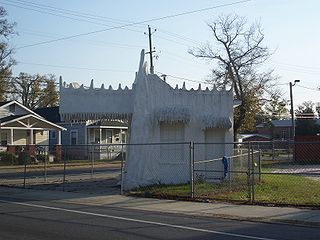
The Crystal Ice Company Building is a historic building located at 2024 North Davis Street in Pensacola, Florida. Built in 1932, the building was used by the Crystal Ice Company to sell ice to travelers. The building, which resembles a block of ice, is one of the few surviving vernacular roadside buildings in Pensacola. On September 29, 1983, it was added to the U.S. National Register of Historic Places.

The L & N Marine Terminal Building is a historic site in Pensacola, Florida. It is located at Commendencia Street Wharf. On August 14, 1972, it was added to the U.S. National Register of Historic Places.

The St. Michael's Creole Benevolent Association Hall is a historic site in Pensacola, Florida. It is located at 416 East Government Street. On May 3, 1974, it was added to the U.S. National Register of Historic Places.
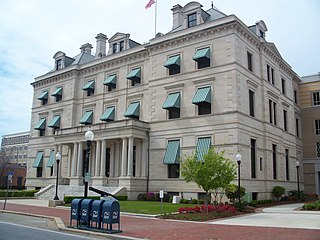
The U.S. Customs House and Post Office, also known as the Escambia County Courthouse, is a historic site in Pensacola, Florida. Built in 1887, it is located at 223 Palafox Place. On July 22, 1997, it was added to the U.S. National Register of Historic Places.

The First Christian Church is an historic church in Pensacola, Florida. It is located at 619 East Gadsden Street. On April 14, 1994, it was added to the U.S. National Register of Historic Places.
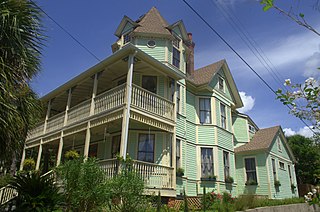
The Marzoni House is a historic house in Pensacola, Florida. Built in 1890, is an example of Queen Anne architecture. It was listed on the National Register of Historic Places on May 10, 2016.

Robert Alexander Andrade is a Republican member of the Florida Legislature representing the state's 2nd House district, which includes parts of Escambia and Santa Rosa counties.






















